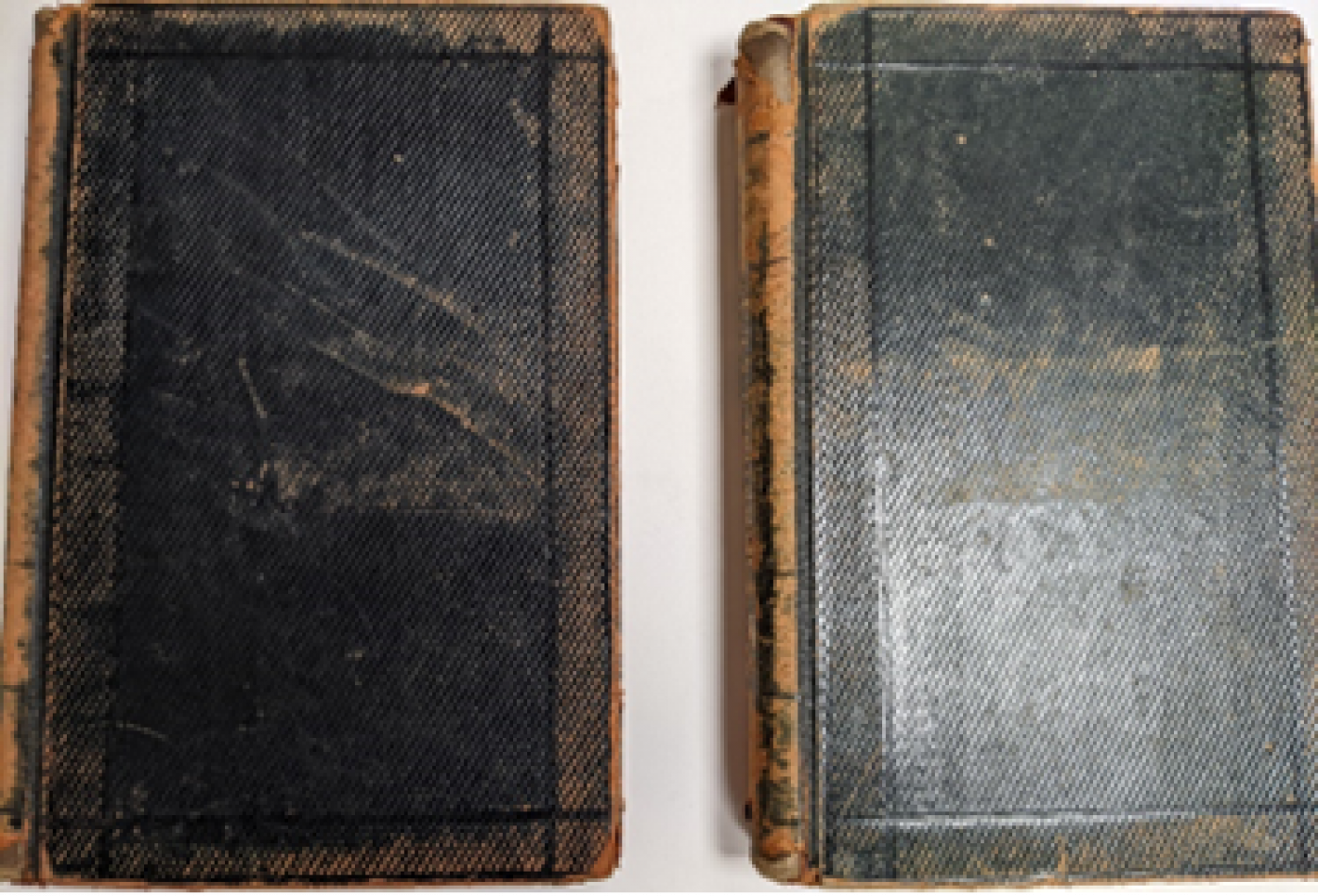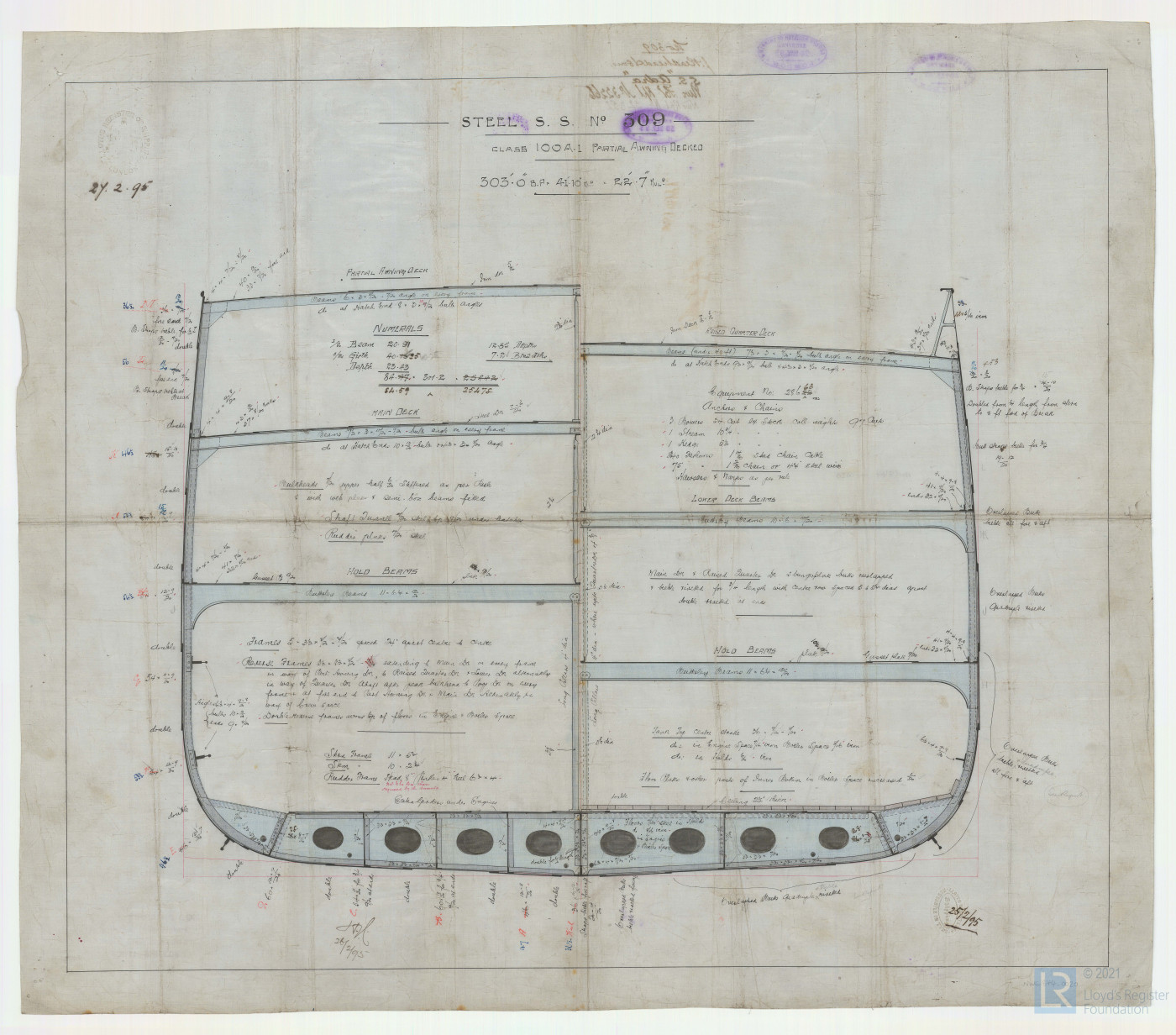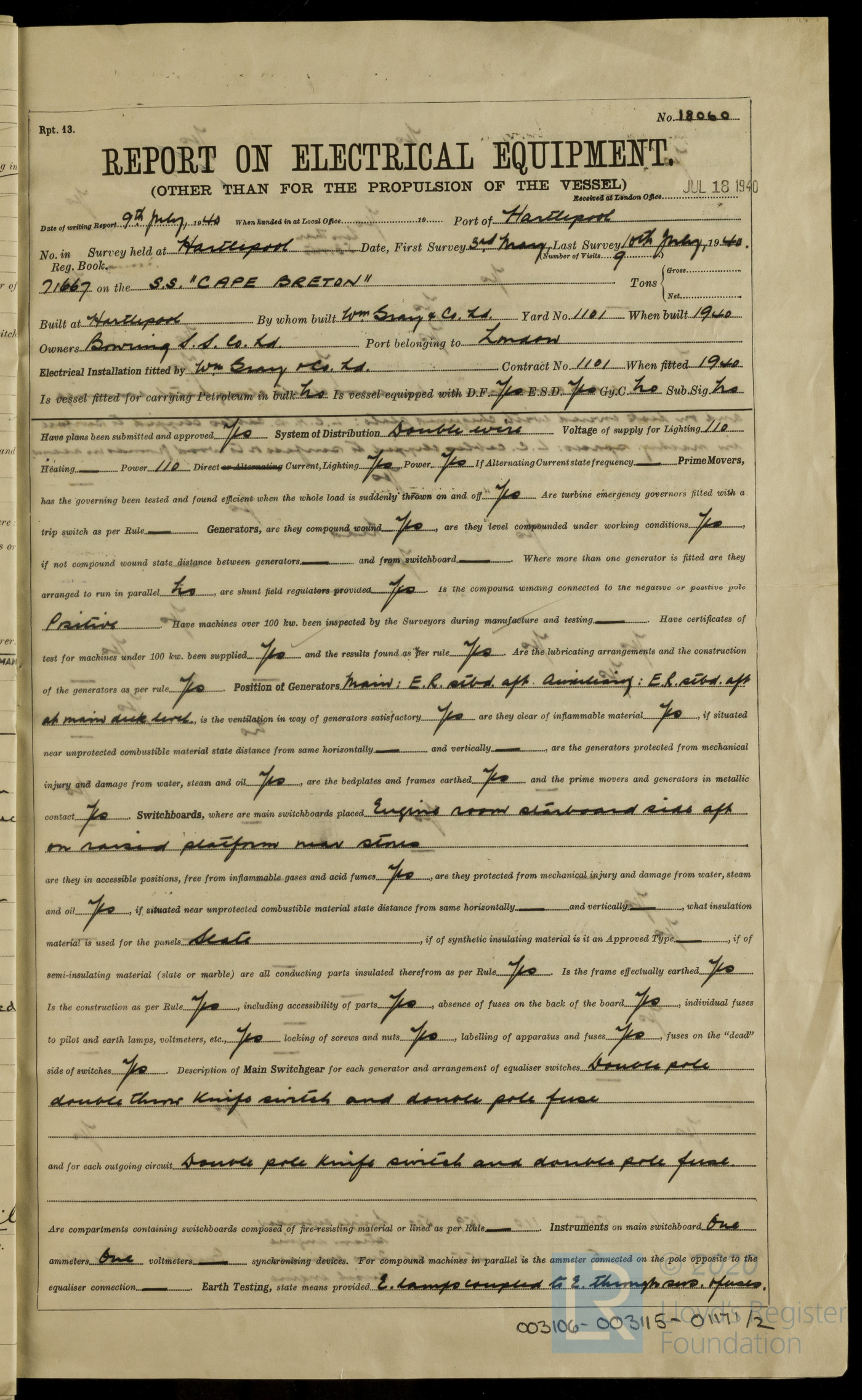Monday, July 31 2023
Towards the end of 2022 the Lloyd’s Register Foundation (LRF) Heritage and Education Centre (HEC) catalogued two volumes from the Bowring Steamship Company (BSC) that had previously been deposited. These form a small collection that shed light on the functioning of a shipping company through the 20th century and help to build on information already in the collections such as the recently digitised Ship Plan and Survey Report Collection (SPSRC).

Account Ledger for the Bowring Steamship Company BSSCL/1/2. Minute Book for the Bowring Steamship Company, BSSCL/1/1
The origins of the BSC date back to 1813 with the firm of Bowring Brothers in St. John's, Newfoundland, established by Benjamin Bowring. They developed over the course of the 19th century and the business took on many names and forms. They were initially involved in the sealing business and over time built a small fleet of ships which would eventually develop into a shipping line. In 1835 Benjamin Bowring opened an office in Liverpool and his son Charles Tricks Bowring would later go on to act as manager, forming the C T Bowring and Company. C T Bowring’s son William Bowring went on to set up an office in New York with Brenton Archibald.
The company continued its expansion into the 1880s, with the creation of the Red Cross Line, transporting cargo between New York, Halifax, Nova Scotia, and St. John's, Newfoundland. From 1890 they were among the earliest developers of tank steamers especially built for petroleum cargo, having previously operated in the transportation of barrelled oil to England. Their first tanker was Bear Creek, which was classed by Bureau veritas, but her sister vessel Snowflake (later Anne de France) was classed by Lloyd’s Register (LR) and records for this vessel can be found on the HEC website.
Further developments within the company led to the formation of the English and American Shipping Co (EASC) in 1888 and they started to branch out into passenger transportation, mainly operating between Liverpool and New York.
However, after and during the First World War the company faced financial and production difficulties and in 1919, the EASC was liquidated, and the company then became the Bowring Steamship Co. It was around this time that the company dropped out of the passenger steamer trade and focused solely on cargo transportation.

Midship Section for Adra, 1895, LRF-PUN-NWC844-0020-P

Report on electrical equipment, Cape Breton, 1940, LRF-PUN-003106-003115-0117
Bowring had long held a relationship with Lloyd’s Register (LR), including sharing the Dulwich sports and cricket ground for many years. Many of their vessels were classed and surveyed by LR and their offices in London were close to LR’s headquarters on Fenchurch Street. Some examples of the BSC ships that were classed by LR include:
- The Cape Breton (built in 1940)
The Cymbeline (built 1927)
The Adra (built 1895)
Discover more vessels classed and surveyed by LR here.
There is reference to the Cape Breton in the BSC Account Ledger, which was surveyed by LR in July 1940, and the Ledger details payments made to LR for surveyor fees. The company continued to have communications with staff members at LR which is how the volumes came to be deposited with us. The collection consists of one Minute Book and one Account Ledger, which were passed onto a previous Chief Executive Officer of LR who alerted staff at HEC who in turn gladly accepted to material.

Minute Book for the Bowring Steamship Company, 1919-1966, Pages 1 and 2 displaying the first meeting of the company and the company seal, BSSCL/1/1
The Minute Book includes summaries on accounts, information on shareholder and contracts and news from the company. There is a discussion early on in the Minute Book which details the creation of the company’s seal, a copy of which is stamped onto the first page. The Minute Book and Account Ledger reveals the wider activities of the BSC and their operations.
Like many other companies in the marine and transportation industry during the Second World War they were called upon to provide material or vessels to aid with the war effort. The two volumes reflect this activity and the pressures that the post-war world had on the British maritime sector. Unfortunately, the BSC closed its doors in the 1980s and is no longer operating as a shipping company.
Although they have been catalogued the BSC collection is not yet on our online catalogue. HEC is currently undergoing a systems transition to a new collections management system, and we are not uploading new collections until this new system is in place.
For further information on our collections and to access the documents which are available online please visit our website.
Other records related to C T Bowring are held at the Liverpool Record Office, which can be contacted through their website.

